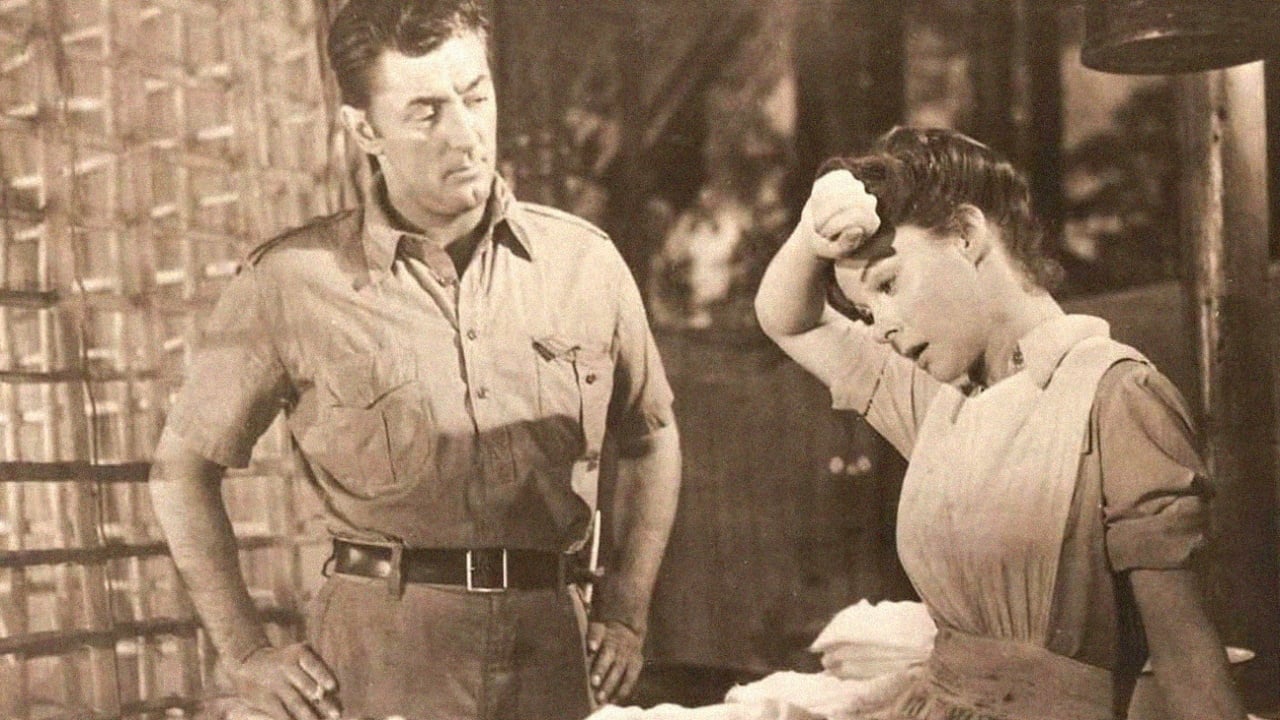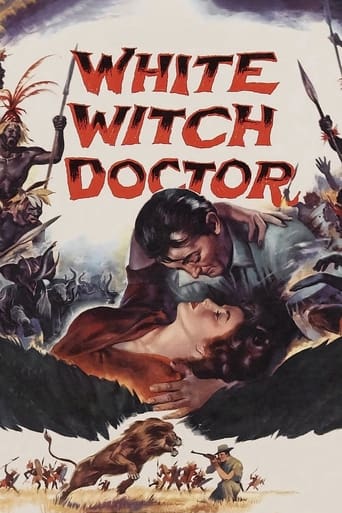

I think bkoganbing has written the most perceptive and accurate review of this film, of all the postings here. Bkoganbing's detailing of the history of the Belgian Congo, from its inception as a private fiefdom of King Leopold, to its transformation into an official "colony," in 1907, is exactly right. And the placing of this film in a 1950s context is also important to point out, as that reviewer has done. When this film was made, the later Zaire/Congo was still a Belgian colony, with independence still a few years away. The makers of the film were no doubt influenced by the prevailing attitudes of the time, and, considering some of those attitudes, the movie is fairly progressive, I think. I lived in the Congo in the late 1970s, when it was called Zaire. That was 70 years after the time period of this story, but some of the elements in this film were still in existence when I was there. Most villages had chiefs, of some form or other, and many had what we used to call "witch doctors." A fair number of people believed that these doctors had special powers, and acted accordingly. Drums were/are still used as a form of communication- what used to be called the "bush telegraph." People dressed as most modern people do- T-shirts and sneakers being quite common- but some of the traditional beliefs still held sway. I'm not an expert in Congolese traditional customs and ceremonies, but I was able to observe a number of interesting things while I was there. Experts in the subject could critique this film's depiction of these things far better than I could. But the scenes in the film seemed fairly accurate, to me, especially for the 1907 time period. Though I would stand corrected, if need be.I was impressed that they seemed to get the language right. Mitchum says that they are speaking Chiluba, which is in fact one of the major languages of the Congo. There are four major trade languages there- Chiluba, Lingala, Kikongo, and Swahili. These trade languages are used as large regional languages, in different parts of the country, so that people can communicate with one another. Swahili in eastern Congo (and neighboring countries), Lingala in the north, and along some rivers, Kikongo in central areas, and Chiluba in the south-- roughly speaking (and if memory serves correct). There are hundreds of smaller regional and tribal languages, and, while many people can speak five or ten of these languages, they often use one of the four trade languages when in another area. The old colonial Belgian French is still one of the government languages, and many people speak that as well. I spoke French and Kikongo when I was there, in my capacity as a volunteer aid worker. Many of my Congolese/Zairean friends spoke multiple languages (to my shame, as I struggled with just these two). Anyway, I think Mitchum and the others are really speaking Chiluba. I didn't speak that language, but all these languages have some overlapping vocabulary, and I think it was Chiluba, or something like it. Again, another poster may be more knowledgeable than I. It seems that Fox must have done some homework for this picture. Mitchum, too, as he handles himself impressively well with the language. I'd love to read comments by Mitchum on his memorizing that dialogue! Mitchum, one of my favorites, was always a trouper, I think.As many have pointed out, he and Hayward never actually went to the Congo. The studio did a pretty good job, I think, of blending studio sets with location shots. Though, as is usually the case, you can spot which are which. Though at least the studio sets aren't as obvious as in many films. The location shots sure brought back memories to me. The river steamers, dugout canoes, riverfront towns, etc.- all looking the same in the '70s, when I was there. The most obvious studio intrusion, to me, was the gorilla you see at the beginning of the film. Though it isn't as bad as many Hollywood "gorillas" you often see- Charlie Gemora in an ape suit, etc., it still detracts from the story. But this IS a 60 year-old film, so it's best not to be too critical, I guess. For its time period, they got some things pretty right. Especially considering that this was not made as a documentary, but as a Mitchum-Hayward entertainment picture, with fictional elements. As one poster pointed out, the source material was a serious book detailing the experiences of two nuns, who tried to bring western medicine to the Congo. Quite a morph there. But still not as outrageous as one might expect from the sensationalistic title. And better and more authentic than lots of other films Hollywood made about Africa, in those days. In my humble opinion, anyway.
... View More"White Witch Doctor," which premiered on July 1, 1953, is the type of movie that I can enjoy greatly while watching it, all the while knowing that I am not watching anything great or extraordinary. And the main reason for that enjoyment, in this case, is the presence of Miss Susan Hayward in the title role. Has there ever been an actress who combined such drop-dead good looks with extraordinary acting ability? Not for me, anyway! Hayward's sheer presence in a movie makes it hard for me to be objective in a critique; I can enjoy anything she appears in, just by looking at that marvelous face. Anyway, you know where I'm coming from. In this picture, Hayward plays a nurse who ventures into the Congo in 1907 to help out at a remote mission. Her guide is Robert Mitchum (her costar in 1952's "The Lusty Men"), who takes her into this Bakuba territory with an ulterior motive: the finding of the gold deposits that supposedly reside there. Along the way, the two encounter just about every safari-movie cliche in the book: the mad gorilla (actually, a man in a gorilla suit), a charging lion, totem fetishes warning journeyers to "STAY OUT," angry witch doctors, a rope bridge, wildly dancing natives and the like. (Sorry, no quicksand.) At one point, Hayward awakens in her tent to find a tarantula crawling on her (a "gift" from a jealous witch doctor), almost a full decade before James Bond, in "Dr. No," faced the same dilemma. I wish I could say that Susan's nurse character faces the predicament with Gems' cool, but in a situation like that, how many people could? Neither Hayward nor Mitchum travelled to Africa to make this picture (this is NOT "The African Queen"!), but there is a lot of location photography of a very beautiful order. The studio sets and actual locales are very well integrated, so the picture never really looks phony. Mitchum here plays a very likeable character, with little of the sluggish moroseness so characteristic of many of his other roles. And Hayward, "the Brooklyn Bombshell," is simply wonderful as Ellen Burton, the American nurse on her first trip into the wilds of Africa. She manages to impress the viewer and the natives alike with her medical abilities and her courage, despite an understandable scream or two when faced with the odd spider, snake, or spear-wielding native. Hayward, 35 when she made this picture, is given many close-ups that reveal what a remarkable beauty she was. In that tarantula scene, for example, director Henry Hathaway shows her lying asleep in bed, her long titian tresses framing her face in close-up, and she really does look stunning in beautiful color. Though the picture doesn't enable either of the two leads an opportunity for any great thespian displays, both manage to make the best of things, pros that they are. The picture really is a rather pedestrian affair, albeit one with great photography and yet another moody Bernard Herrmann score, but it is totally redeemed for me by the presences of the two leads...especially Hayward's. "White Witch Doctor" would make a wonderful double feature with Hayward's other African picture, "The Snows of Kilimanjaro," or perhaps with a picture that came out the following year, "The Naked Jungle," featuring another redheaded beauty, Eleanor Parker, stuck in the jungles of South America. I'm not sure that "White Witch Doctor" is in the same league as those other two, but it still makes for a marvelous entertainment, and is eminently suitable for the kiddies, as well. I thoroughly enjoyed it...but, like I said, you know where I'm coming from!
... View MoreLonnie Douglas (Robert Mitchum) and his partner, Huysman (Walter Slezak), guide a dedicated nurse Ellen Burton (Susan Hayward) to the distant jungle outpost where she, as a volunteer, has been sent to give medical aid to the natives.. But Huysman and Lonni also have plans of their own: it is said that there is hidden gold in the Bakuba country, and they are determined to find it...They penetrate the remote interior of the Belgian Congo by means of a primitive canoe propelled by a native crew... At one of their portages Ellen cures a native chief's wife (Dorothy Harris) and the witch doctor, seeking revenge for her interference, tries to kill her with a tarantula, but she manages to escape its poisonous bite...Later, Lonni saves a boy who has been severely injured fighting a lion... The lad is the son of the Bakuba king and wears a necklace made of gold nuggetsthe treasure Lonni and Huysman are seeking... Perhaps this is the opportunity they've been waiting for, Lonni thinks, and devises a plan for using the Bakuba boy to get the gold...There have been quite a number of Adventurers ladies, the most notably adventurous of whom has perhaps been the aggressive and resilient Susan Hayward who was at her best not in the Oscar-Winning vein of 'I Want to Live,' but roughing it out in the jungle in films like 'White Witch Doctor.'She was quite capable of blasting Jack Elam with a rifle at the end of 'Rawhide,' and in 'The Snows of Kilimanjaro,' she was tough enough to send the witch doctor packing and go to work with a knife on Gregory Peck who will otherwise die from the infection that was building up in him... Hayward was the great outdoor actressindoors, she was often a bit too much to take...This was Hayward's second movie with Robert Mitchum... They were teamed in Nicholas Ray's rodeo movie in 'The Lusty Men' (1952).Africa was the real star of "White Witch Doctor," with beautiful color shots of the Congo and Bakubas caught in their colorful dances, taken by Leon Shamroy, three times an Oscar winner...
... View MoreI rather enjoyed this film even though it was a little slow in some places. The cinematography alone should have garnered an Oscar nomination (if it didn't) as the settings in Africa were brilliantly and beautifully photographed. The story revolves around a nurse played by Hayward who goes to Africa to assist a woman doctor in taking care of the sick people there. Susan Hayward plays the nurse and upon arrival meets a businessman played by Robert Mitchum. He thinks she's crazy for staying and she's definitely going to stay! Hayward's and Mitchum's lives become endangered when someone decides to make greed the name of the game. Definitely worth watching and sorry it is not available on video.
... View More